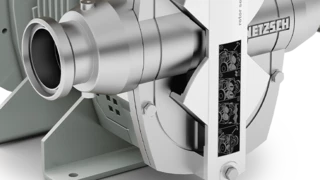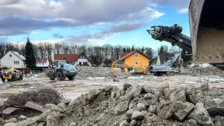NETZSCHicon
Pipe
A pipe describes a tube with pumps or pumping stations that convey liquids or gases. It includes pipes, valves and seals, connection pieces, fasteners, screw unions, extension pieces, and moulded components.
It often compensates for collet movement while transporting liquids or gases and fuses the installation. Sometimes, a pipeline can extend for thousands of kilometres, for example, to extract raw materials. The size of pipelines is called the nominal diameter (abbreviated DN, from the French term "diamètre nominal"). The nominal diameter always refers to the inner diameter. The ability of a pipeline to absorb the internal pressure is indicated by the nominal pressure (PN, pressure nominal). When selecting a suitable pipeline for the operation of a plant, it is not only the quantity required or to be conveyed that plays a role. The flow velocity and the NPSH ratio are also critical for longer pipelines. The choice of materials and wall thickness of the pipe depends on the expected maximum pressure. In industrial plants, specific pipe classes predefine the intended area of application.





